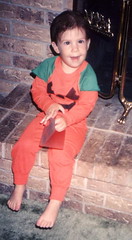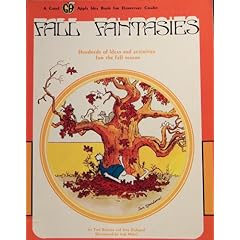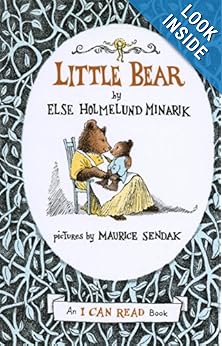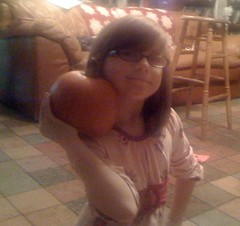I’m celebrating pumpkins this week, or probably for the rest of the month, maybe even in November. Why not?
If you’d like to celebrate with me, here are some pumpkin suggestions for reading, eating , creating, and just goofing around. Have a pumpkin and enjoy!
Have pumpkin-themed fun:
 1. Monica uses and reuses one small pumpkin for big fun and food.
1. Monica uses and reuses one small pumpkin for big fun and food.
2. TenThingsFarm growing a pumpkin
3. Make a paper bag pumpkin.
4. Gourds turn into bird feeders.
5. How to carve a pumpkin bowl.
6. Decoupage pumpkins.
7. Enjoy a pumpkin picture.
8. How to pick the perfect pumpkin.
9. People for the Ethical Treatment of Pumpkins. (PET-PU)
10. Soda bottle jack-o-lantern.
11. Pumpkin paper plate pouch.
12. CD Pumpkin.
13. Pumpkin carving patterns.

14. Pumpkin poems and songs.
15. How to grow a giant pumpkin.
16. Knit a pumpkin hat.
17. Make a pumpkin lantern.
18. Pumpkin Bouquets.
19. 3 Dimensional Pumpkin Card.
20. Pumpkin Tie-Dye shirts.
21. Extreme Pumpkins!
22. Make some Pumpkin Pie Play Dough.
23. Play “drop the clothespin into the pumpkin.”
24. Pumpkin topiary trompe l’oeil.
25. Make a pumpkin from a flat basketball.
26. Host a Great Pumpkin Party.
27. Make a cinnamon-pumpkin air freshener.
Read a pumpkin book:
28. Big Pumpkin by Erica Silverman. A witch wants to bake a pumpkin pie, but the pumpkin is stuck on the vine. Who will help her?
29. Pumpkin Jack by Will Hubbell. Tim carves a pumpkin which eventually rots and turns into compost, and then more pumpkins grow, and the cycle starts all over.
30. Oh My, Pumpkin Pie! by Charles Ghigna, illus. by Kenneth Spengler. A step into Reading rhyming book.
31. How Many Seeds in a Pumpkin? by Margaret McNamara, illus. by G. Brian Karas. Mr. Tiffin’s class counts the seeds in three pumpkins of varying sizes. Math and pumpkins go together in a story.
32. Pumpkins by Ken Robbins. An autumn book of photographs with an emphasis on pumpkins.
33. Pumpkin Soup by Helen Cooper and Delicious! A Pumpkin Soup Story by Helen Cooper. Cat, Squirrel, and Duck work together to make their famous pumpkin soup.
34. Pumpkin, Pumpkin by Jeanne Titherington. Jamie grows a pumpkin in beautiful colored pencil illustrations.
35. Pumpkins: A Story for a Field by Mary Lynn Ray. A man saves a field from developers by planting it with pumpkins.
36. A story of reading Pumpkin Circle: The Story of a Garden by George Levenson to some of Katrina’s youngest victims.
37. The Pumpkin Patch Parable by Liz Curtis Higgs. Just as a farmer grows a pumpkin, God grows us into a beautiful sight.
38. From Seed to Pumpkin by Jan Kottke.
39. Pumpkin Moonshine by Tasha Tudor. Classic Tasha Tudor tale of how Sylvie Ann sets out to make a pumpkin moonshine.
40. The Biggest Pumpkin Ever by Stephen Kroll. Two mice work together to win the Biggest Pumpkin competition.
41. From Seed to Pumpkin by Wendy Pfeffer. A Let’s Read and Find Out science book.
41. Grandma’s Smile by Elaine Moore. Kim and her grandma carve a pumpkin.
42. The Great Pumpkin Switch by Megan McDonald. Grampa and his friend Otto accidentally smash a prize pumpkin.
43. The Pumpkin Patch by Elizabeth King. Photgraphs of pumpkins growing accompany text about how pumpkins are grown, marketed and enjoyed.
44. Mousekin’s Golden House by Edna Miller. Classic story of a white-foot mouse who finds a wonderful house abandoned in the forest.
45. Mrs. McMurphy’s Pumpkin by Rick Walton. A pumpkin jack-o-lantern threatens to eat Mrs. McMurphy up, but she just says, “We’ll see about that.”
46. Plumply, Dumply Pumpkin by Mary Serfozo. Peter the Tiger picks a perfect pumpkin.
47. The Runaway Pumpkin by Kevin Lewis. A runaway pumpkin creates havoc on the farm. Lesson plan.
48. Pumpkin Town! Or, Nothing Is Better and Worse Than Pumpkins by Katie McKay. Pumpkin vines overrun the town, and the pumpkin farmer’s five sons must come up with a solution for too much of a good thing. Lesson plan.
49. The Pumpkin Book by Gail Gibbons. Out of print, but worth a search.
50. This Is NOT a Pumpkin by Bob Staake. If it’s not a pumpkin, what could it be? A board book for the youngest listeners.
51. The Great Little Pumpkin Cookbook by Michael Krondl.
52. It’s the Great Pumpkin, Charlie Brown by Charles M. Schulz.
53. Patty’s Pumpkin Patch by Teri Sloat. Patty grows pumpkins on her farm.
54. The Pumpkin Blanket by Deborah Zagwyn. A girl gives up her special blanket to keep the frost off the pumpkin plants.
55. Pumpkin Day, Pumpkin Night by Anne Rockwell.
56. Pumpkin Hill by Elizabeth Spurr. It starts with one pumpkins, but soon the pumpkin vines have taken over the town.
57. The Pumpkin Runner by Marsha Arnold. An Australian rancher uses pumpkin as fuel to help win a 500 mile foot race.
58. The Berenstain Bears and the Prize Pumpkin by Stan and Jan Berenstain.
59. Somethin’ Pumpkin by Scott Allen: Lesson Plan.
60. For older readers (middle grades through young adult): Jen Robinson’s review of Me and the Pumpkin Queen by Marlane Robinson.
Another book review: Squashed by Joan Bauer.
Make something yummy to eat from pumpkin:

61. The Headmistress’s favorite pumpkin recipes.
62. Montana Memories prepares pumpkin pancakes.
63. And here are Poohsticks Pumpkin Buttermilk pancakes.
64. Molly McCall: 30 Ways to Eat Pumpkin.
65. The Headmistress’s Pumpkin Seed Dip.
66. Make some pumpkin bread to give away or enjoy yourself.
67. Brenda’s Pumpkin and Cranberry Bread recipes.
68. Pumpkin Gingerbread at Poohsticks.
69. Preparing fresh pumpkin from seed to pie.
70. Easy Pumpkin Ice Cream.
71. October 21 is National Pumpkin Cheesecake Day?
72. Glorious pumpkin recipes: bread, pie, pasta, and more.
73. Lots more pumpkin recipes.
74. Pumpkin Main Meal Dishes.
75. The Anchoress: Pumpkin Bread Pudding.
76. Impossible Pumpkin Pie. I like baking mix-based pies, but I’ve only made quiche-type pies this way. I never thought of a sweet pie made with an “impossible” crust. On 10/20/2008 the little girls and I made this pie, and it was good. However, I probably should have cooked it a little longer than the fifty minute minimum called for in the recipe.
77. Pumpkin decorated sugar cookies.
78. Pumpkin Biscotti.
79. Harvest Pumpkin Spice Bars.
80. Pumpkin Smoothie.
81. Chocolate Pumpkin Spice Cake.
82. Pumpkin Casserole.
83. The Pioneer Woman’s pumpkin butter.
84. Salted flavored roasted pumpkin seeds.
85. Pumpkin spice cream cheese spread.
86. Pumpkin banana pudding.
87. Pumpkin scones.
88. Mexican Pumpkin Lasagne.
89. Pumpkin Swirl Brownies.
More punkin stuff for fun and learning:
90. Listen to Andy Griffith tell about the fight in the cow pasture over the little orange punkin and about how he dropped his Big Orange drink.
91. Pumpkin pie math lesson.
92. Sandy offers a pumpkin painting.
93. Paint a pumpkin. I mean, paint a picture of a pumpkin.
94. Free pumpkin carving patterns.
O.K., I’m running out of steam, so I’m leaving the last six slots for you. If you have a favorite pumpkin recipe, or book, or craft (easy, I’m craft-impaired) or lesson or anything, that has not already made this list, leave a comment, and I’ll link here later. In the meantime, visit a pumpkin patch, or carve a pumpkin, or eat something pumpkin, or read about pumpkins, or . . . thank the Lord for pumpkins!
95.
96.
97.
98.
99.
100.








